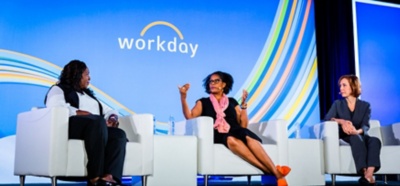The women on the panel agreed that everyone must be part of the conversation. “We became siloed because affinity groups gave us a place to feel safe to have conversations,” said Roesch. “But now it’s time to break it open. We need to see different examples of successful people.”
Women and underrepresented minorities can’t tackle challenges they see in the workplace alone, she added. Take the suffragettes as an example. “Both women and men had to convince men in power to give women the right to vote in 1920. We can’t do it alone now. We need to bring other people into the conversation.”
Add millennials and Gen Zs to the mix, too, as they enter the workforce. “They’re demanding that we start to get engaged and address these issues,” said Taylor. “They’re saying, ‘If you’re not helping us address these social issues that are creeping into the workplace and impacting me, I’m not interested in coming to your company—or purchasing from your company.’”
So how can we build more awareness around diversity and inclusion? A willingness to have respectful and courageous conversations, for starters. “We also have to get very comfortable with being uncomfortable,” said Brown. “We have to be open to understand, to listen, and to hear. Just as you want to listen to the needs of your customers, you also need to take the time to hear the needs of your employees.”
To watch this Workday Rising Las Vegas Business Leader Forum with Carin Taylor, Lesley Slaton Brown, and Larissa Roesch,register here. Select “Endless Possibilities: The Power of Diversity and Inclusion” under Business Leader Forums.







